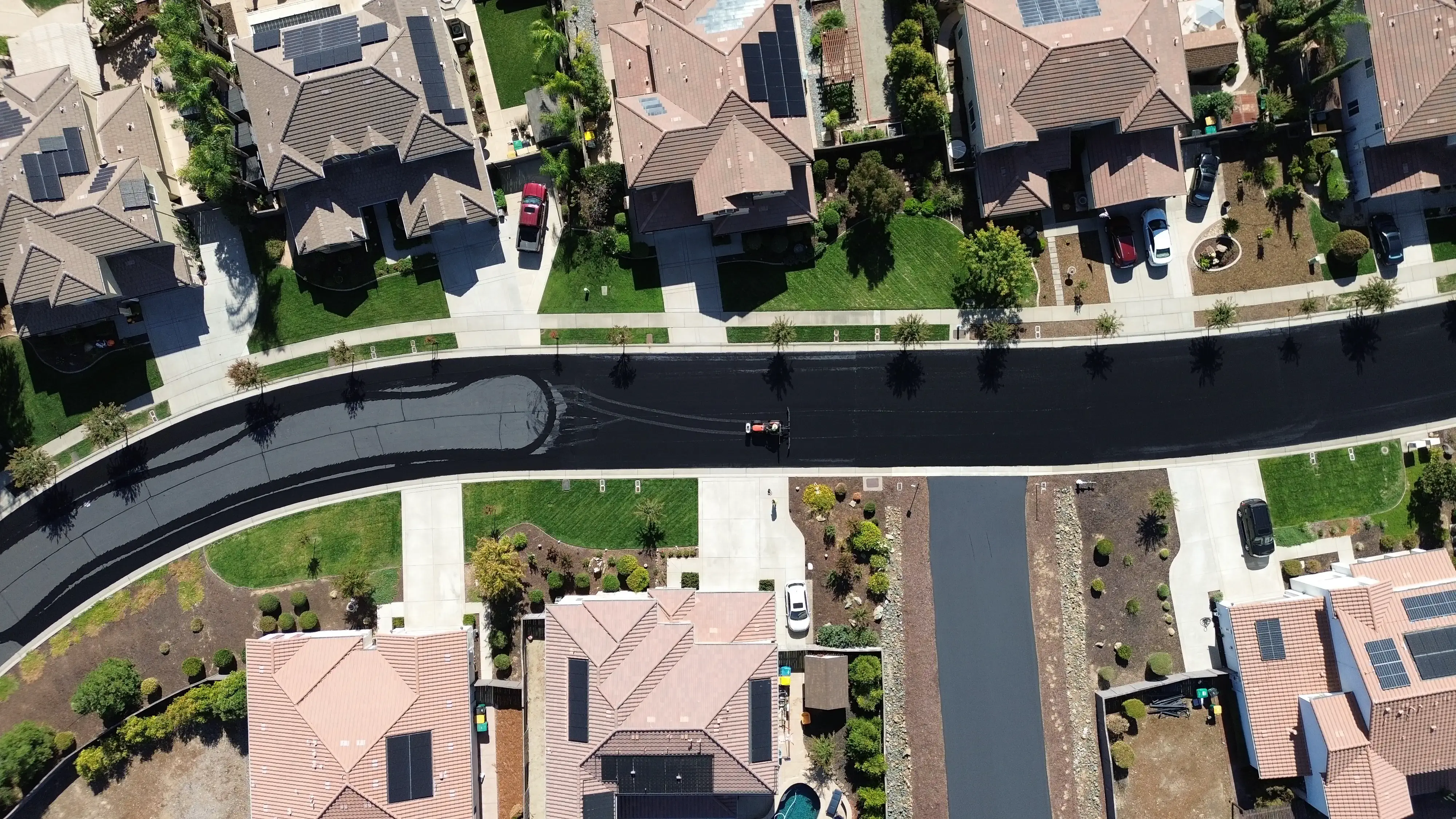Seal coating is an essential maintenance process primarily for asphalt pavement, where a protective layer (seal coat) is applied over asphalt to preserve it and extend its lifespan. Here’s an overview of its uses, types, benefits, and common misconceptions.
Uses of Seal Coat
Protection:
Seal coats act as a shield against damaging elements such as UV rays, oils, gas spills, water, and oxidation, which can deteriorate the pavement.
Aesthetic Appeal:
Seal coating restores the deep black color of asphalt, making it look new and well-maintained.
Cost Savings:
Regular sealing can prevent major repairs by extending the life of the pavement, thus saving costs in the long run.
Surface Smoothness:
It fills minor cracks and irregularities, providing a smoother surface for vehicles and pedestrians.
Types of Seal Coats
Coal Tar Sealers: Cannot be used in some states
Made from coal tar, these are highly resistant to gas, oil, and UV rays.
Best for high-traffic areas, like parking lots.
Known for durability but can have a stronger odor and environmental impact.
Asphalt Emulsion Sealers:
Water-based and eco-friendlier than coal tar.
Less resistant to chemicals but provide a good aesthetic finish.
Easier to apply and less odor.
Acrylic Sealers:
Synthetic, more expensive, and offer excellent UV and weather resistance.
Often used in high-end projects and for decorative purposes.
Available in multiple colors, providing aesthetic flexibility.
Oil-based Sealers:
Known for deep penetration into asphalt, rejuvenating old surfaces.
Less common for regular use but sometimes applied for older, drying surfaces.
Benefits of Seal Coating
Enhanced Durability: Protects against weather, chemicals, and general wear and tear, helping prevent cracks and potholes.
Improved Appearance: Restores faded, worn asphalt to a fresh, new look.
Extended Pavement Life: Protects the underlying structure, delaying the need for costly resurfacing.
Easier Maintenance: Regularly sealed surfaces are easier to clean and require less frequent repair.
Improved Safety: A smoother surface with fewer cracks is safer for pedestrians and vehicles.
Common Misconceptions
1. Seal Coating Fixes All Cracks and Damage: Seal coating fills small, surface-level cracks but does not repair structural issues. Major cracks or potholes need patching before applying a seal coat.
2. One Application Is Enough: Many believe a single coat lasts forever. In reality, seal coating typically needs reapplication every 2–4 years, depending on the environment and traffic.
3. Immediate Use After Application: Newly sealed asphalt needs time to cure. Heavy traffic or footfall too soon can damage the coating.
4. Any Weather Works for Application: Seal coating requires warm temperatures and dry conditions to cure properly. Application during cold or wet weather can result in poor adhesion.
Summary
Regular seal coating can preserve, protect, and improve asphalt pavement, making it a valuable maintenance step. Choosing the right type and understanding its limitations are essential for maximizing benefits.
